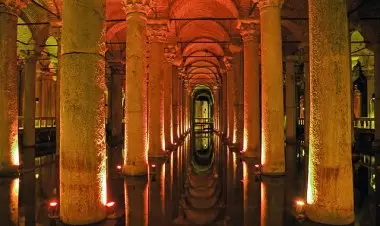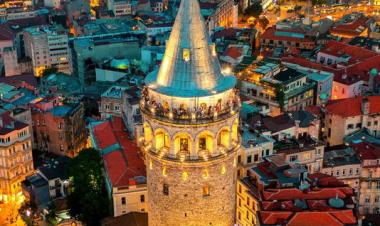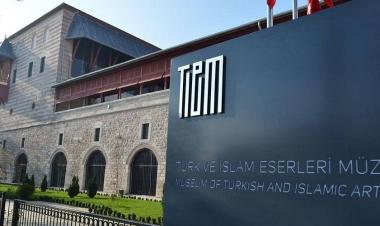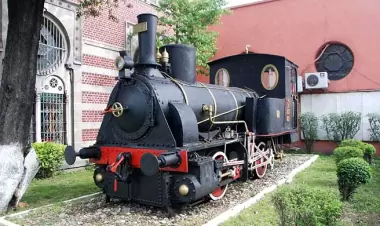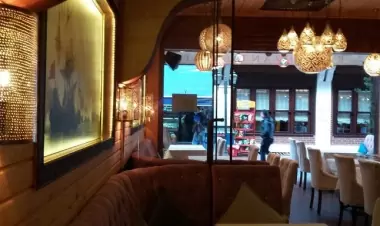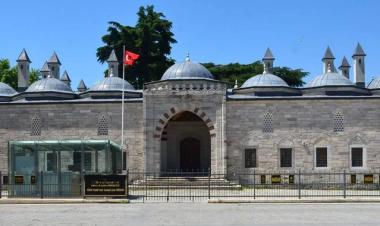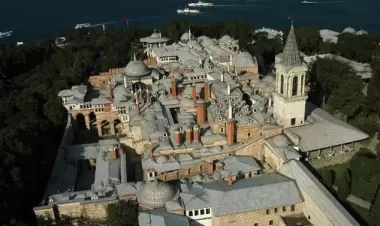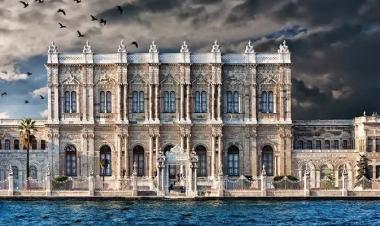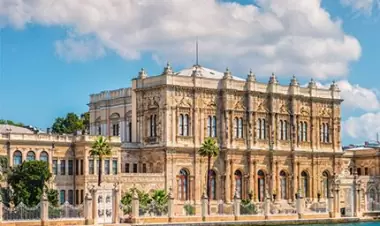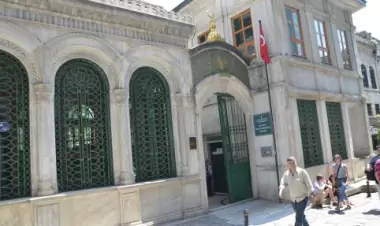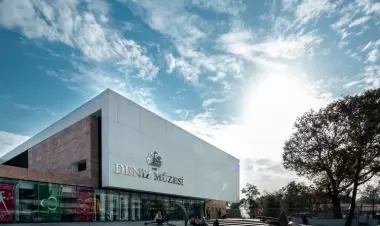Chora Church

Chora Church:A Jewel of Byzantine Art and Architecture

The Chora Church, also known as the Kariye Museum (Kariye Müzesi in Turkish), is one of the most significant historical and architectural landmarks in Istanbul, Turkey. Revered for its breathtaking mosaics and frescoes, it offers an unparalleled glimpse into Byzantine art, culture, and religious practices. Situated in the Edirnekapı neighborhood of Istanbul, this church has evolved over the centuries from an early Christian place of worship to a mosque and, more recently, a museum. The Chora Church is a living testament to the rich cultural heritage of the Byzantine Empire, and its significance in the study of art and history cannot be overstated.
A Brief History of Chora Church

The origins of the Chora Church date back to the early 4th century, during the reign of Emperor Constantine the Great. Originally constructed as a small church outside the walls of Constantinople, the structure was rebuilt and expanded over the centuries. The most notable phase of its construction occurred in the early 11th century under the patronage of the Byzantine Emperor Manuel I Komnenos (reigned 1143–1180). This is when the church was transformed into a lavish and grand structure with elaborate mosaics and frescoes.
The name "Chora" itself derives from the Greek word "Chôra," meaning "country" or "rural area." In the context of the church, it likely referred to its location outside the city walls of Constantinople. However, as the city expanded, the church was eventually absorbed into the urban fabric.
In the 15th century, after the Fall of Constantinople in 1453, the church underwent a significant transformation when it was converted into a mosque by the Ottomans. During this period, many of the Christian mosaics and frescoes were covered over or obscured, though some survived and are visible today.
In the 20th century, the Chora Church was secularized and turned into a museum in 1945, where it became famous for its stunning Byzantine artworks. In 2020, the Turkish government reconverted it into a mosque, though it remains open to visitors and continues to be an important cultural and historical site.
Architectural Significance

The Chora Church is renowned for its unique and intricate architectural design, which blends both Byzantine and Ottoman styles. The church's architectural layout follows a traditional Byzantine plan, featuring a central dome surrounded by a series of smaller domes and apses. The structure is characterized by its cross-in-square design, which was common in Byzantine church architecture. This layout provides a visually harmonious and spiritually symbolic space for Christian worship.
One of the most remarkable features of the church’s architecture is the use of the narthex, or entrance hall, which is adorned with stunning mosaics. The narthex serves as a transitional space from the secular world into the sacred interior, and its decoration is meant to prepare the worshippers spiritually for the holy experience inside the church.
The church’s interior features a spacious central nave, which is flanked by two aisles and a series of smaller chapels. Above, the central dome is supported by four massive piers, allowing for a large and open interior that gives the building an ethereal sense of space and light. The design of the church, both structurally and decoratively, demonstrates the Byzantine mastery of creating awe-inspiring sacred spaces.
The Mosaics and Frescoes of Chora Church

Perhaps the most striking feature of the Chora Church is its extensive collection of mosaics and frescoes, which are among the finest examples of Byzantine art in existence today. These artworks are not only masterpieces of religious iconography but also offer insights into the theological and cultural ideas of the time.
Mosaics in the Narthex

The mosaics in the narthex, particularly those on the upper walls, depict key scenes from the life of Christ, the Virgin Mary, and various saints. The artistic style of these mosaics reflects the transition from the earlier, more static representations of the Christian faith to a more dynamic and human-centered portrayal of biblical events.
One of the most famous mosaics in the Chora Church is that of The Anastasis (The Harrowing of Hell), which is located in the central apse of the church. The scene shows Christ’s descent into Hell to rescue the souls of the righteous, a powerful and dramatic representation of the triumph of Christ over death.
The Life of Christ and the Virgin Mary

The church’s mosaics also illustrate the lives of Christ and the Virgin Mary in stunning detail. Scenes such as the Annunciation, the Nativity, the Crucifixion, and the Resurrection are all depicted with remarkable beauty and clarity. These mosaics are known for their use of light and color, which create a vivid sense of depth and emotion. The figures in the mosaics are often portrayed with an emphasis on human expression, making them feel more relatable and approachable.
The Virgin and Child mosaics are particularly significant in their portrayal of the Mother of God. In these depictions, the Virgin Mary is often shown as a compassionate, maternal figure, underscoring her importance in Byzantine theology and devotion.
The Frescoes
In addition to the mosaics, the Chora Church is also home to some extraordinary frescoes. These frescoes, painted on the church's walls and ceilings, were created during the same period as the mosaics. The frescoes often complement the mosaic scenes by providing further narrative and iconographic depth.
Some of the frescoes in the church focus on the Life of Christ and the Early Christian Martyrs, while others depict Biblical Prophets and Holy Angels. The frescoes’style differs somewhat from the mosaics in that they feature softer, more fluid lines and a greater sense of atmospheric depth.
Iconography and Theological Themes
The iconography in the Chora Church is deeply intertwined with Byzantine theological themes. One of the central ideas reflected in the mosaics and frescoes is the concept of Theosis—the idea of divine union and transformation. This theme is expressed through the depiction of Christ’s life, death, and resurrection, as well as through images of saints, martyrs, and angels, all of whom are portrayed as being in direct communion with the divine.
The images of the Virgin Mary in the mosaics and frescoes are particularly significant, as the Virgin was considered a central figure in the Byzantine Church. She was viewed not only as the Mother of God but also as a mediator between humanity and Christ. Her iconography is meant to evoke feelings of grace, compassion, and intercession.
Cultural and Religious Importance
Throughout its history, the Chora Church has held significant cultural and religious importance. It was a place of Christian worship for centuries, and its mosaics and frescoes were intended to educate the faithful in the teachings of the Church. The images were not just artistic expressions but also theological tools, designed to communicate complex religious concepts to a largely illiterate population.
After the Ottoman conquest of Constantinople in 1453, the church was converted into a mosque, and its Christian iconography was largely hidden or covered over. However, many of the mosaics and frescoes survived, hidden beneath layers of plaster and paint. This survival of Byzantine art in the mosque setting is a testament to the adaptability and endurance of the Chora Church as a sacred site.
The Chora Church Today
Today, the Chora Church is a fascinating blend of cultural and religious history. It stands as a reminder of Istanbul’s rich and complex heritage, where the influences of Christianity, Islam, and Byzantine culture intersect. Though it is now a mosque, it remains open to tourists and scholars alike, who come to admire its stunning mosaics and frescoes and to learn more about the artistic and religious traditions of the Byzantine Empire.
In recent years, the church’s mosaics have been carefully restored, and scholars continue to study and interpret the rich iconography and historical context of the artwork. The Chora Church remains an essential site for those interested in Byzantine art, religious history, and the cultural legacy of the Eastern Roman Empire.
Mosaics of the Narthex

The narthex, or entrance area, of Chora Church contains some of the most visually striking mosaics in the entire structure. These mosaics serve to prepare the viewer spiritually as they move from the secular world into the sacred space of the church.
The Life of Christ:
- Annunciation:In this mosaic, the Archangel Gabriel announces to the Virgin Mary that she will conceive the Son of God. The scene is delicate and full of grace, with both figures shown in a peaceful, reverent posture.
- Nativity:This mosaic depicts the birth of Christ, showing the Virgin and Child surrounded by angels and attendants. The child is portrayed in the traditional Byzantine style, with an emphasis on His divine nature.
- The Presentation of Christ in the Temple:Another important scene from the Gospel narrative, this mosaic shows the Virgin and Child being presented to the Temple in Jerusalem, a significant moment in Christ’s early life.
The Life of the Virgin Mary:
- The Dormition of the Virgin:This mosaic shows the Virgin’s death and her ascent into Heaven. It is a poignant depiction of the end of her earthly life and her glorification in Heaven. Christ is depicted holding the soul of the Virgin as a small child.
- The Assumption of the Virgin:In this image, Mary is lifted into Heaven, surrounded by a host of angels. The event signifies the Virgin's divine reward for her role as the Mother of God.
Theological Themes:
- Harrowing of Hell (Anastasis):One of the most famous mosaics in the Chora Church, this scene is located in the apse and depicts Christ’s descent into Hell after His crucifixion. Christ is shown rescuing the souls of the righteous, such as Adam and Eve, from death. The scene is powerful and dramatic, reflecting the Byzantine emphasis on Christ's victory over death.
Mosaics Inside the Main Church (Naos)

Inside the main church, the mosaics are more complex and cover a wide range of biblical scenes, with particular emphasis on the life of Christ and the Virgin Mary. The mosaics here are considered to be some of the finest examples of late Byzantine art.
Christ the Pantocrator
In the dome of the apse, the mosaic of Christ Pantocrator (Christ as the Ruler of All) is a central image. Christ is depicted in a calm and regal manner, with a commanding presence. His right hand is raised in blessing, while His left hand holds a book, symbolizing His authority as the divine judge and teacher.Scenes from the Passion of Christ
- Crucifixion:The mosaic of the Crucifixion is one of the most vivid in its emotional portrayal of Christ’s suffering. Christ is shown in agony, yet His divine nature is still present, emphasizing both His humanity and divinity.
- Deposition from the Cross:This mosaic shows the moment when Christ's body is taken down from the cross and prepared for burial. The figures around Christ are depicted in grief and sorrow, highlighting the human cost of His sacrifice.
The Resurrection
The Resurrection is depicted with remarkable vibrancy, showing Christ emerging from the tomb, trampling down death. The image captures the moment of Christ's victory over death and His triumph over evil.
Iconography and Theological Significance

The mosaics in Chora Church are rich in iconography, which is deeply tied to the theological concepts of the Byzantine Empire, particularly the notions of Theosis (divine union) and salvation.
- The Virgin Mary plays a central role in the mosaics. The Byzantine Church venerated her as the Mother of God, and many of the mosaics depict her in various roles—whether as a protector, intercessor, or participant in Christ’s divine plan.
- The mosaics emphasize Christ’s divinity and His role as the Savior of mankind. Many scenes depict Christ’s triumph over sin and death, reinforcing the idea of salvation through Christ.
- The use of light and gold in the mosaics was not just aesthetic;it had a theological purpose. The light symbolized the divine presence and the illumination of the faithful through Christ and the Virgin.
Artistic Characteristics of the Mosaics

- Gold Background:A distinctive feature of the Chora mosaics is the use of a gold background, which was typical in Byzantine mosaics. This background creates a sense of the eternal, emphasizing the heavenly nature of the scenes depicted.
- Human Emotion:The figures in the mosaics are more expressive than earlier Byzantine art, and their emotional depth is one of the defining characteristics of these works. For example, the scenes of the Crucifixion and the Deposition show sorrow and compassion in the faces of the figures.
- Naturalism and Volume:The figures in the Chora mosaics are rendered with a greater sense of volume and three-dimensionality than is often seen in earlier Byzantine art. This gives the figures a more lifelike quality and brings them closer to the viewer.
- Color and Detail:The mosaics are known for their vivid use of color, particularly in the robes of the saints and angels, which are often rendered in rich reds, blues, and greens. The detail in the faces and clothing of the figures is extraordinary, showcasing the technical skill of the artists.
Preservation and Legacy

The Chora Church’s mosaics were hidden for centuries under plaster when the church was converted into a mosque after the Ottoman conquest of Constantinople in 1453. It was not until the 20th century, when the building was converted into a museum, that the mosaics were uncovered and restored. The restoration process, particularly during the 1940s and 1950s, was crucial in bringing these masterpieces back to life.
Today, the mosaics are considered some of the finest examples of Byzantine religious art. They are admired not only for their beauty but also for their profound theological and spiritual messages. The Chora Church remains a key destination for art historians, scholars, and visitors who wish to understand the grandeur of Byzantine civilization and its artistic achievements.
In 2020, the Chora Church was reconverted into a mosque, but it remains open to the public and continues to be an important cultural and historical site in Istanbul.
The Chora Church (Kariye Museum), now a mosque, is located in the Edirnekapı district of Istanbul, Turkey. Here are several ways to get there, depending on your starting point and preferred mode of transport:
- By Public Transportation (Bus or Tram + Walk)
Istanbul has an extensive public transportation system that can take you close to the Chora Church:
Option 1:Tram + Bus
- Step 1: Take the T1 tram (the Bağcılar-Kabataş line) from Sultanahmet or Karaköy station, heading in the direction of Bağcılar.
- Step 2: Get off at Edirnekapı station (this is the nearest tram stop to the Chora Church).
- Step 3: From Edirnekapı, it's about a 10-15 minute walk to the church, following signs or using a map app on your phone.
Option 2:Bus
- Step 1: Take a bus to Edirnekapı or Emin Sinan (there are several buses that pass through these areas).
- Step 2: From there, you can walk to the church, which is about 10-15 minutes on foot.
- By Taxi or Ride-Hailing Apps (e.g., Uber, BiTaksi)
Taking a taxi or using a ride-hailing app like Uber is a more direct and comfortable option, especially if you're coming from central areas like Sultanahmet or Taksim.
- The ride takes around 15–20 minutes from Sultanahmet (depending on traffic), and you can ask the driver to drop you near Kariye Müzesi (Chora Church).
Note:Istanbul's traffic can be unpredictable, so give yourself extra time if you're on a tight schedule.
- By Walking (If Staying in Sultanahmet or Nearby)
If you're staying in the Sultanahmet area (which is the tourist center with attractions like Hagia Sophia, Blue Mosque, and Topkapi Palace), you can walk to the Chora Church:
- The walk takes about 30–40 minutes, depending on your pace.
- Walk north from Sultanahmet towards Aksaray (using Divan Yolu Street or nearby pedestrian streets).
- Once in Aksaray, you can either continue towards Edirnekapı and ask for directions, or use Google Maps to find the best route.
- By Car
If you're driving, you can use Google Maps or a GPS to navigate to Kariye Müzesi, which will bring you close to the church's entrance. There are parking areas around the neighborhood, but be mindful that parking in the area can be limited.
Address of Chora Church:

- Kariye Müzesi, Kariye Cami (Chora Church Mosque)
- Address: Dervişali Mahallesi, Kariye Caddesi, 34087 Edirnekapı, Fatih/Istanbul, Turkey
Opening Hours and Entrance Fees
- The Chora Church is now functioning as a mosque, but it is open to visitors. Check the current opening hours as they may change, especially during prayer times.
- Entry is free, though donations are encouraged.
Nearest Locations

The Walls of Constantinople (Theodosian Walls)
- Distance:About a 5–10 minute walk from Chora Church.
- What to See:The Theodosian Walls are a series of massive fortifications that once protected the city of Constantinople. These ancient walls, built in the 5th century, are an impressive sight and offer a glimpse into the history of the Byzantine Empire.
- Why Visit:You can walk along parts of the walls, explore the Yedikule Fortress (Seven Towers Fortress), which is located a bit further along the walls, or simply admire the ruins.
Yedikule Fortress (Seven Towers Fortress)
- Distance:About 15 minutes by walk from Chora Church.
- What to See:A historic fortress that was once part of the defensive walls of Constantinople. It was used for military purposes and later as a prison.
- Why Visit:The fortress is open to visitors and offers a glimpse into Istanbul's Byzantine and Ottoman military history. You can also get a panoramic view of the city from its towers.
Fatih Mosque
- Distance:About 10-15 minutes by bus or taxi.
- What to See:The Fatih Mosque is one of the major mosques in Istanbul and was built on the site of the Church of the Holy Apostles. It is an important historical and religious site.
- Why Visit:The mosque itself is a beautiful example of Ottoman architecture and is located in the Fatih district, which has many historic sites.
Vefa Kilisesi (Vefa Church)
- Distance:Around 10–15 minutes on foot from Chora Church.
- What to See:The Vefa Church (also known as the Vefa Greek Orthodox Church) is another historical site in the area. Though not as famous as the Chora Church, it holds a special place in Byzantine and Ottoman religious history.
- Why Visit:It's a quiet and peaceful place that reflects the multicultural heritage of the region.
Aksaray District
- Distance:Around 20 minutes on foot or 5 minutes by tram from Chora Church.
- What to See: Aksaray is a bustling commercial area filled with shops, cafes, and restaurants. It's also home to Laleli, a famous area for buying wholesale goods and textiles.
- Why Visit:This area offers a more local and modern contrast to the historical sites in Istanbul. You can explore Turkish markets, grab some snacks, and experience the everyday life of locals.
Fener and Balat Neighborhoods
- Distance:Around 20-25 minutes by walk or 10 minutes by taxi from Chora Church.
- What to See:These are historic neighborhoods with a rich cultural and architectural heritage. The Fener area is famous for the Greek Patriarchate and its colorful houses, while Balat is known for its old, picturesque streets, synagogues, and charming cafes.
- Why Visit:If you're into photography or just want to explore the more bohemian side of Istanbul, Fener and Balat are great places to stroll around.
Süleymaniye Mosque
- Distance:About 20 minutes by tram or taxi.
- What to See:The Süleymaniye Mosque is one of the largest and most impressive mosques in Istanbul, designed by the famous architect Mimar Sinan. It is a prime example of Ottoman architecture.
- Why Visit:The mosque complex includes a beautiful courtyard, gardens, and stunning views of the Golden Horn.
Pierre Loti Hill
- Distance:About 25–30 minutes by bus or taxi.
- What to See: Pierre Loti Hill offers one of the best panoramic views of the Golden Horn and Istanbul's historic peninsula. You can take a cable car up to the top or enjoy the view from the hill's cafes.
- Why Visit:It's a great place to relax, enjoy a traditional Turkish tea, and take in the stunning vistas of Istanbul.
Eyüp Sultan Mosque
- Distance:About 25 minutes by bus or taxi from Chora Church.
- What to See:The Eyüp Sultan Mosque is an important mosque in Istanbul and a pilgrimage site. It is located near the Golden Horn and is associated with the tomb of Eyüp al-Ansari, one of the Prophet Muhammad's companions.
- Why Visit:The mosque and its surroundings are very serene, and the area offers a peaceful environment for visitors.
View On Map
Loc: 41.03119345, 28.938888304979635
Content Index
Others in Same Category
This site was created by a person who was born in Istanbul and is a lover of Istanbul, with the aim of introducing the beauties of the city to be discovered.
If you are planning to visit Istanbul or would like to get more information, you can contact with us via contact us button on below:
Contact Us

